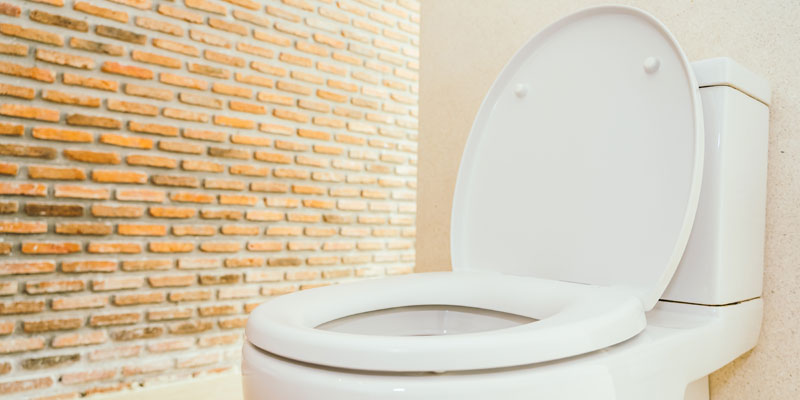Ever had a running toilet? If so, you know that it can be a real pain. Not only is the sound of water constantly trickling down from your loo annoying, but it also wastes water and money! Fortunately, there are many easy-to-follow steps for fixing this problem. Read on for four common causes and solutions.
Adjust the Flapper
Some running toilets are caused by an improperly adjusted flapper. You can adjust the flapper with the instructions provided below, or call a plumber for help with this task. The flapper is the plastic cup at the bottom of your toilet tank. As you flush the toilet, the flapper rises which allows water from the tank to enter the toilet bowl. If the flapper isn’t flush with the bottom of the tank, then water could be slipping past it into the bowl constantly. As a result, the tank will drain until the refill tube has to fill it again. This happens constantly, causing the running toilet.
To adjust the flapper, turn off the toilet water, remove the flapper, and wash and scrub the plastic cap and stopper thoroughly. Place the flapper back when finished and try to fit it over the hole as closely and snuggly as possible. If the flapper still leaks, you likely have to replace it.
Adjust the Flapper Chain
The flapper chain connects to both the flapper and the toilet’s handle. When you press the toilet’s handle to flush the contents of the toilet, you’re also raising the chain. Raising the chain lifts the flapper, allowing water to flow into the bowl. If the chain is too long or too short, it could interfere with how the flapper sits in the tank and create leaks. Adjusting the chain is an easy fix to try.
To adjust the flapper chain, first remove your toilet tank’s cover and flush the toilet, watching how the flapper chain behaves. If it barely raises the flapper, it is likely too short. If it is so long that it’s possible to get under the flapper, then it’s too long. If the chain is too short, move the hook that attaches the chain to the handle up a few links. If the chain is too long, try cutting a few links off the top of the chain to get it to the appropriate size.
Adjust the Float
The toilet’s float is suspended and attached to the fill valve. After you flush the toilet, the fill valve adds water until the float begins floating in the tank. When the fill valve no longer has to hold up the float itself, it stops adding water. The issue can come if the float is incorrectly positioned. If that’s the case, the fill valve could add too much water to the tank. This forces the overflow tube to drain the excess water repeatedly, therefore forcing the toilet to keep running.
There are two common types of float that you might see in your tank: ball floats and cup floats. A ball float will attach to the fill valve through a traditional arm. Cup floats, on the other hand, will wrap around the fill valve. Regardless of whichever type of float you have, you can manually adjust where the float is suspended within the tank by using the adjustment screw connected to the fill valve arm. Simply use a pair of pliers to turn the screw counterclockwise to lower the float and clockwise to raise it.
Check the Fill Tube
The fill tube is the tube that runs from the water inlet valve to the top of your overflow pipe. You can identify it by finding the small, flexible, curving plastic tube in the tank. While the fill valve refills the tank of the toilet, the fill tube is in charge of the toilet bowl. The fill tube should always be above the waterline in the tank, even when the tank is full.
If you find that your fill tube is underwater when the tank is full, it could be the cause of your running toilet. To resolve the issue with the fill tube, manually bend the tube up out of the water.
Contact Bodenheimber Plumbing Services
If you’re uncomfortable handling your plumbing or the above resolutions didn’t work for your running toilet, contact Bodenheimer Plumbing Services. We even offer emergency plumbing services. Give us a call today to schedule an appointment for one of our experienced plumbers to resolve your plumbing problem: (336) 788-3966


